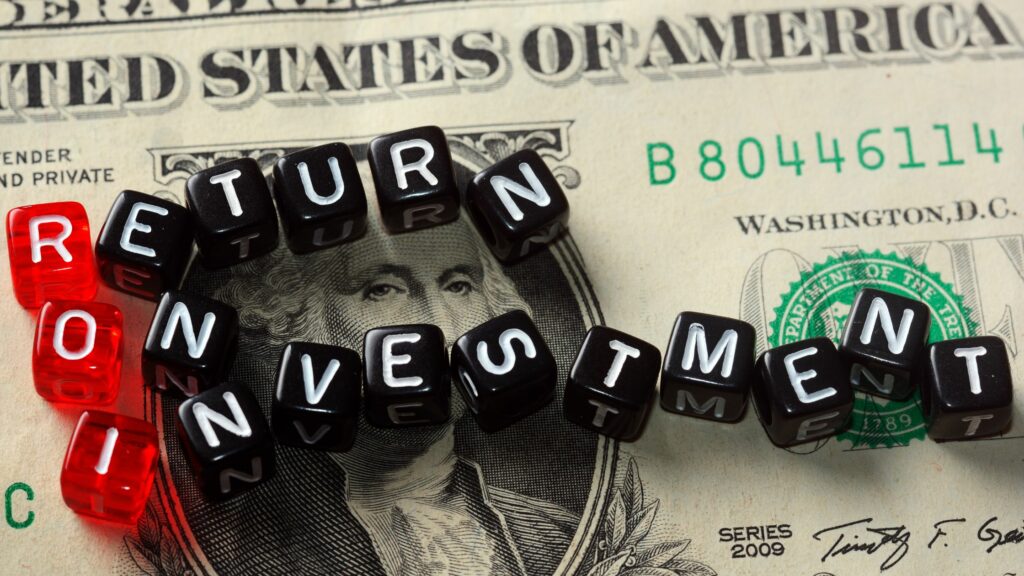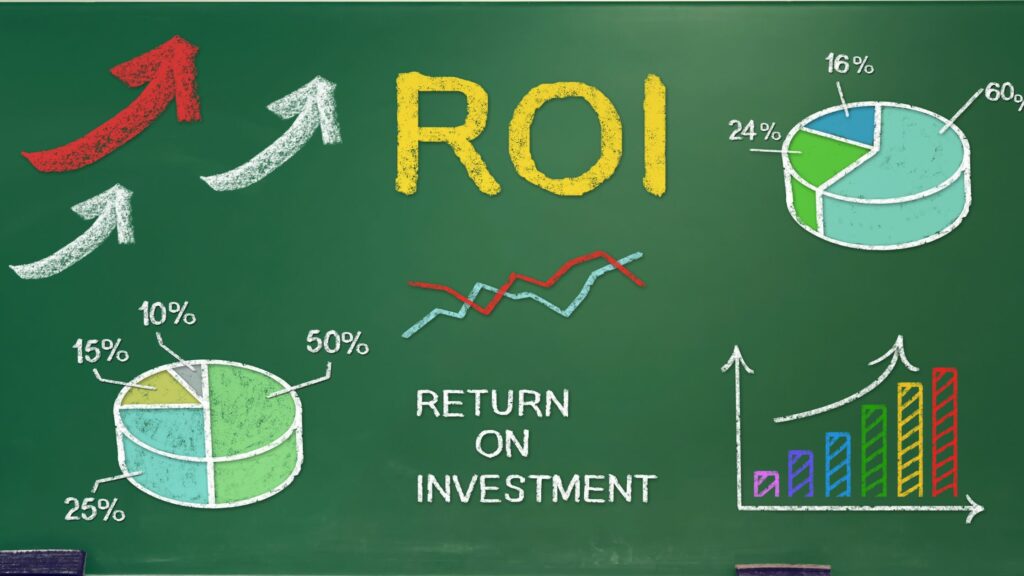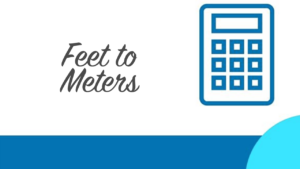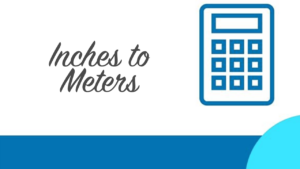ROI or return on investment is a performance measure used to evaluate the efficiency of an investment or compare the profitability of different investments. To calculate ROI, the benefit (or return) of an investment is divided by the cost of the investment, and the result is expressed as a percentage or a ratio.
For example, if an investor spends $100 on a stock that goes up in value by 10%, the return on investment would be calculated as follows: ROI = (10% x 100)/100 = 10% In this case, the ROI is 10%. This means that for every dollar invested, the investor earned back 10 cents. Generally speaking, the higher the ROI, the better. However, it is important to keep in mind that ROI is not the only factor that should be considered when making investment decisions. Other factors such as risk and the time frame of the investment should also be taken into account.
What does ROI mean in business?
There are a number of different definitions for Return on Investment (ROI), but the most commonly used definition is “the ratio of money gained or lost on an investment relative to the amount of money invested.” In other words, it is the percentage of return that an investor can expect to receive from an investment.
For example, if an investor puts $1,000 into a stock and it goes up by 10%, the ROI would be 1,000 x 0.10 = $100. On the other hand, if the same stock goes down by 10%, the ROI would be -1,000 x 0.10 = -$100. It should be noted that ROI is not always a good measure of how successful investment has been. For example, if someone buys a stock for $1 and sells it immediately for $2, the ROI would be 200%. However, if the stock then went down to $0.50, the ROI would be -50%. In this case, the initial gain of 100% was offset by the subsequent loss of 50%, resulting in a net loss of 50%.
Another important thing to keep in mind is that ROI is typically expressed as a percentage, which can make it difficult to compare investments that have different upfront costs. For example, let’s say you’re considering two different stocks: Stock A costs $100 and generates a return of 10%, while Stock B costs $10 and generates a return of 5%. In terms of absolute dollars, Stock A has generated a return of $10 ($100 x 0.10), while Stock B has generated a return of $0.50 ($10 x 0.05). However, when we look at the ROIs of these investments, Stock A’s ROI is 10% and Stock B’s ROI is 500%. As you can see, comparing ROIs can be tricky; in this case, you might conclude that Stock B is the better investment even though it actually generated less return than Stock A.
There are a number of different ways to calculate ROI, and there is no one “right” way to do it. The method that you use will depend on your particular goals and objectives. However, one common method is to simply take the gains from an investment and divide them by the original cost of the investment. This will give you the percentage increase (or decrease) in value over time.
For example, let’s say you invest $1,000 in a stock that goes up by 10% over the course of one year. Your total gain would be $1,000 x 0.10 = $100. Therefore, your ROI would be $100/$1,000 = 10%. If the stock had gone down by 10%, your ROI would be -$100/$1,000 = -10%.
ROI can be a useful tool for evaluating investments; however, it’s important to understand its limitations and how to properly interpret the results.
What is the ROI formula in Excel?
The ROI formula in Excel is very simple. It just divides the amount of gain or loss by the content investment. So, to show this in Excel, you would type =C2/A2 in cell D2. That would give you the ROI for that particular piece of content.
What is ROI explained
ROI, or return on investment, is a mathematical formula that investors can use to evaluate their investments and judge how well a particular investment has performed compared to others. An ROI calculation is sometimes used with other approaches to develop a business case for a given proposal.
To calculate ROI, the benefits (or returns) of investment are divided by the cost of the investment. The result is expressed as a percentage or a ratio. For example, let’s say an investor buys a stock for $100 and it goes up in value by 10% over the course of one year. The following year, the stock falls in value by 5%. The ROI for the first year would be 10% (or ($10/$100)). The ROI for the second year would be -5% (or (-$5/$100)). Generally speaking, the higher the ROI, the better. However, it’s important to keep in mind that there is no guaranteed rate of return on any investment, and past performance is not necessarily indicative of future results.
How is ROI of a project calculated?
The return on investment (ROI) of a project is the estimated or actual income from the project minus the estimated or actual costs of the project, divided by the costs. In other words, it is the total profit that a project has generated, or is expected to generate, divided by the costs. This metric is used to evaluate whether a project is worth undertaking and whether it is likely to be profitable.
What does ROI mean in simple terms?
ROI, or return on investment, is a mathematical formula that investors can use to evaluate their investments and judge how well a particular investment has performed compared to others. An ROI calculation is sometimes used with other approaches to develop a business case for a given proposal. To calculate ROI, the total amount of money gained or lost on investment is divided by the total amount of money invested. The resulting percentage is then expressed as a ratio or percentage.
For example, if an investor spends $100 on investment and it grows to be worth $110 after one year, the ROI would be 10%. ROI can be a helpful tool for making decisions about where to invest your money. However, it’s important to remember that ROI is only one factor to consider when evaluating an investment. Other factors, such as risk and potential reward, should also be taken into account.
How do you calculate ROI manually?
The ROI, or return on investment, is a way to measure the profitability of an investment. To calculate it, you divide the ending value of the investment by the starting value and then raise that number to the power of one divided by the number of years. So, if you started with $100 and ended with $200 after two years, your ROI would be: ROI = (200 / 100) ^ (1 / 2) – 1 = 100%
How do I calculate ROI in Excel?

If you’re looking to calculate ROI in Excel, it couldn’t be simpler. All you need are your total returns and total cost, input into their own respective cells. Then, simply type “=A1/B1” to work out your ROI. Once you’ve got your result, you can click the “%” icon to change the ratio into a percentage. And that’s all there is to it!
What is ROI and how is it calculated?
Your return on investment (ROI) is a calculation of how much profit you made from an investment versus its cost. The ROI formula is: (profit minus cost) / cost. So, if your efforts yielded a $10,000 profit and it cost you $1,000 to make those efforts, your ROI would be 0.9, or 90%.
What is ROI and how does it work?
ROI, or return on investment, is a measure of the profit you make as a result of your investments. To calculate ROI, divide the net profit of your investment by the total cost of the investment. The higher the ratio, the better the return. Keep in mind that ROI is most useful when it refers to something concrete and measurable, so you can identify your investment’s gains and financial returns.
What is the formula for ROI in Excel?
To calculate ROI in Excel, you can use the following formula: ROI = (Ending value / Starting value) ^ (1 / Number of years). To figure out the number of years, you’d subtract your starting date from your ending date, then divide by 365. This will give you the number of years between your start and end dates.
Is ROI a good thing?
ROI, or return on investment, is a term that businesses use to measure how much money they’re making in relation to the amount of money they’re spending. In other words, it shows whether or not the organization is profitable.
A negative ROI means that a company is losing money, while a positive ROI indicates growth. There are several factors that can affect ROI, such as the type of business, the products and services offered, the level of competition, and the economy. Therefore, it’s important to take all of these into consideration when evaluating ROI.
Overall, ROI is an important metric for businesses to track because it can give them insights into how well their investments are performing. If a company has a negative ROI, it may be time to reevaluate their strategies. On the other hand, a positive ROI can be a sign of good things to come.
What does ROI of 30% mean?
A ROI figure of 30% from one store looks better than a ROI figure of 20% from another store, for example. The 30% ROI figure may be over the course of three years, as opposed to the 20% ROI figure from just the one year. Thus, the investment over one year is obviously the better option.
What does ROI mean in banking?

In banking, ROI stands for return on investment. The ROI measures the percentage of profit that a bank makes on its investments. It is important to note that the ROI does not take into account the risk involved in making the investment. The ROI is calculated by dividing the net income from the investment by the amount of money invested.
The higher the ROI, the more profitable the investment is for the bank. Banks use the ROI to measure the performance of their investments and to make decisions about where to invest their money. A high ROI indicates that a bank’s investment is doing well, while a low ROI indicates that the investment is not performing as well as it could be. Banks typically aim for a high ROI on their investments so that they can maximize their profits.
What does an ROI of 30% mean?
An ROI of 30% means that for every $1 you invest in a store, you can expect to earn back $0.30 over the course of three years. This is a better return than the 20% you would earn from investing in another store over the course of one year.
What is ROI formula?
There are multiple methods for calculating ROI, but the most common is to divide net income by the total cost of the investment. This gives you a percentage that represents how much return you’re getting on your investment relative to how much you’ve invested. For example, if you have a net income of $100 and you’ve invested $1000, then your ROI would be 10%.
Is an ROI of 30% good?

An ROI of 30% can be good, but it depends on how long your ROI has been at that percentage. A 1-year ROI of 20% compared to 3-years of a 30% ROI could be considered a better investment because it shows consistency over a longer period of time.
What is the purpose of an ROI?
The purpose of an ROI is to compare the efficiency or profitability of an investment relative to its cost. In other words, it measures how much return you get for each dollar you invested. ROI is often used to justify investing in a new project or piece of equipment.
For example, if Company A is considering investing $1 million in a new manufacturing machine, they will want to know what their return on that investment will be before making a decision. If the company calculates that the machine will generate an additional $200,000 in revenue each year, and that it will have a lifespan of 10 years, then the ROI would be 20%. ($200,000 divided by $1 million, multiplied by 100 to get a percentage.) This means that for every dollar invested in the machine, the company can expect to see a return of 20 cents.
Investors may also use ROI to compare different investments. For example, let’s say you’re trying to decide whether to invest in stock A or stock B. If stock A has an ROI of 15% and stock B has an ROI of 10%, then stock A would be the better choice since it has a higher return. Keep in mind that ROI is just one metric you can use when deciding whether or not to make an investment; it shouldn’t be the only factor you consider. Other things such as risk and potential upside should also be taken into account before making any decisions.
What is a good ROI percentage for a project?
ROI, or return on investment, is a key metric for any project. A good ROI percentage varies depending on the industry and type of project, but a general range is 5% to 10%. This means that for every dollar invested in the project, you can expect to see five to ten dollars returned. Of course, this is just a general guideline – some projects may have higher ROIs, while others may not be as profitable. The important thing is to carefully consider the potential return on investment before investing any money into a project.
How do you find an ROI?
There are multiple methods for calculating ROI. The most common is net income divided by the total cost of the investment, or ROI = Net income / Cost of investment x 100.
What is ROI example?
If you’re thinking about selling your house, you’ll want to know what your return on investment (ROI) could be. In real estate, ROI is calculated by taking the profit from the sale of the property and dividing it by the cost of the investment. The resulting percentage is your ROI.
For example, let’s say you purchased a house for $250,000 and spent an additional $50,000 on repairs and renovations. You then sell the house for $350,000. In this case, your net profit would be $100,000 (gain from investment minus the cost of investment). To calculate your ROI, you would divide that net profit ($100,000) by the cost of your total investment ($250,000) and then multiply by 100 to get a percentage. In this scenario, your ROI would equal 40 percent. Of course, there are many factors that can affect your actual ROI when selling a house. These include the current state of the housing market, how much you spend on renovations, and the final selling price of the home. However, calculating your estimated ROI before putting your house on the market can give you a good idea of what to expect financially from the sale.
What does ROI calculator calculate?
The ROI calculator calculates the return on investment for a given period of time. It takes into account the initial investment, the number of periods, the periodic rate of return, and the final value of the investment. The ROI formula is used to compare the efficiency of different investments.
What are three types of ROI?
Hard value is the best ROI because it comes from hard savings. Soft value covers areas such as “improved efficiency,” “time savings,” and “cost avoidance.” The last category, “other” value, is more binary or probability based.
What does an ROI tell you?
An ROI tells you how much money you made on an investment relative to how much you paid for it. In other words, it shows you how efficient your investment was in terms of generating profit. To calculate ROI, you simply divide your total earnings from the investment by the total amount you paid for it.
The higher the resulting number, the better your investment performed. Keep in mind that ROI is just one metric you can use to evaluate an investment; it’s not the be-all and end-all. Other factors, such as risk and overall company performance, should also be considered before making any decisions.
What does 30% ROI mean?
Assuming you want a definition and not an math explanation: ROI stands for Return on Investment. It is a performance measure used to evaluate the efficiency of an investment or compare the efficiency of a number of different investments. Essentially, it tells you how much money you’re getting back for every dollar you spend. The higher the ROI, the better.
To calculate ROI, the benefit (or return) of an investment is divided by the cost of the investment, and the result is expressed as a percentage or ratio. For example, let’s say you invest $1,000 in a stock that goes up $200 over the course of a year. Your ROI would be 20% (($200-$1000)/$1000). On the other hand, if the stock goes down $100 over the same timeframe, your ROI would be -10% (($100-$1000)/$1000).
How is ROI percentage calculated?
To calculate the ROI percentage, you first need to subtract the initial value of the investment from the final value of the investment. This will give you the net return. Next, divide this number by the cost of the investment. Finally, multiply it by 100.
What is ROI method?
The ROI method is a popular metric used to evaluate the profitability of an investment. ROI is expressed as a percentage and is calculated by dividing an investment’s net profit (or loss) by its initial cost or outlay. For example, if an investment has a net profit of $100 and an initial cost of $200, the ROI would be 50%.
How do I calculate my ROI number?
To calculate your ROI, or return on investment, simply subtract the initial value of your investment from the final value of the investment. This number is your net return. To get your ROI, divide the net return by the cost of the investment and multiply by 100. That’s it!
What is a good ROI result?
A good ROI (return on investment) result is a ratio of 5:1 or higher. A ratio over 5:1 is considered strong for most businesses, and a 10:1 ratio is exceptional. Achieving a ratio higher than 10:1 is possible, but it shouldn’t be the expectation. Your target ratio is largely dependent on your cost structure and will vary depending on your industry. For example, if you have a high overhead cost, you’ll need a higher ROI to make a profit.
What is a normal ROI number?
There is no definitive answer to this question since what may be considered a “good” return on investment (ROI) can vary depending on the person or organization making the investment. However, according to conventional wisdom, an annual ROI of approximately 7% or greater is generally seen as being a good return when investing in stocks. This 7% figure is also roughly in line with the average annual return of the S&P 500 index over time, once inflation has been taken into account. It’s important to keep in mind that the S&P 500 is just an average, so there will be years where the actual return on investment is higher than 7%, and other years where it falls below this figure.
Why is ROI used?
There are a number of reasons why ROI is often used by businesses as a key performance indicator. Firstly, it is an exceptionally useful metric for measuring success over time. This means that businesses can use ROI to compare the profitability of different investments, and make informed decisions about where to allocate their resources in the future.
Secondly, ROI takes into account both the initial cost of an investment and the ongoing costs associated with it. This makes it a more comprehensive measure of profitability than simply looking at the upfront cost. Finally, ROI is relatively easy to calculate, which makes it a quick and efficient way to assess the profitability of an investment.
Whats ROI means?
ROI, or return on investment, is a measure of the profitability of an investment. It is calculated by dividing the net benefits of the investment by the costs of the investment. The higher the ROI, the more profitable the investment is. There are many different ways to calculate ROI, but the most common method is to divide the difference between the initial investment and the final value of the investment by the initial investment.
This number is then usually multiplied by 100 to get a percentage. For example, if you invest $100 in a stock and it goes up to $120 over the course of a year, your ROI would be 20%. ROI can be used to compare different investments, as well as to measure the performance of a single investment over time. It is important to remember that ROI is not the only thing to consider when making an investment decision, as there are other factors such as risk that should also be taken into account.






